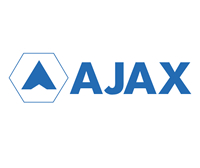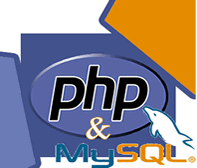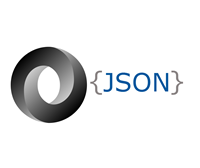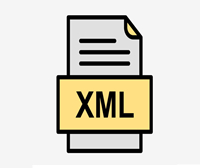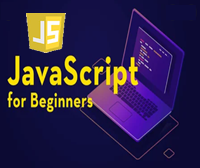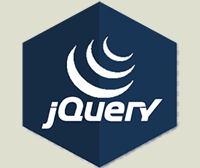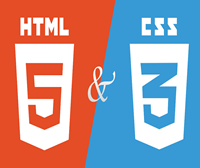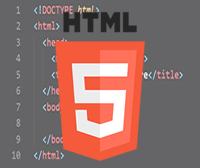XML Programming Overview
Extensible Markup Language (XML) is a markup language that defines a set of rules for encoding documents in a format that is both human-readable and machine-readable. The World Wide Web Consortiums XML 1.0 Specification of 1998 and several other related specifications—all of them free open standards—define XML.
Table of Contents
Unlock All XML Programming Lesson Videos
Subscribe now to unlock these videos and gain access to all of the Lesson videos and content on XML Programming Course.
GET STARTED NOWHave an account? Login
 SchoolNK
SchoolNK
SchoolNK Awards you Diploma Certificate in XML Programming Web Development at the completion of this course.
About XML Programming course
XML is a software- and hardware-independent tool for storing and transporting data.
What is XML?
XML stands for eXtensible Markup Language. XML is a markup language much like HTML. XML was designed to store and transport data. XML was designed to be self-descriptive. XML is a W3C Recommendation.The Difference Between XML and HTML
XML and HTML were designed with different goals: XML was designed to carry data - with focus on what data is. HTML was designed to display data - with focus on how data looks. XML tags are not predefined like HTML tags are.XML is a software- and hardware-independent tool for storing and transporting data.
What is XML?
XML stands for eXtensible Markup Language. XML is a markup language much like HTML. XML was designed to store and transport data. XML was designed to be self-descriptive. XML is a W3C Recommendation.The Difference Between XML and HTML
XML and HTML were designed with different goals: XML was designed to carry data - with focus on what data is. HTML was designed to display data - with focus on how data looks. XML tags are not predefined like HTML tags are.What you’ll learn
- null
Top Web Development Courses
See Web Development Courseswith Powersoft Technology
Ajax is short for Asynchronous JavaScript and XML, which refers to a set of web development techniques rather than an actual programming language. Ajax however, is widely used in client side programming (e.g. JavaScript) to allow for data to be sent and received to and from a database / server. Whats special about using Ajax programming is that you can exchange data in the background without actua...
Introduction to Ajax
XMLHttpRequest to a text file (part 1)
Request to a PHP file (part 1)
Request to a PHP file (part 2)
Request to a PHP file (part 3)
1.13 hours
5 lessons
Beginner
with Powersoft Technology
PHP is an acronym for "PHP: Hypertext Preprocessor", PHP is a widely-used, open source scripting language, PHP scripts are executed on the server, PHP is free to download and use. PHP is an amazing and popular language, It is powerful enough to be at the core of the biggest blogging system on the web (WordPress)! It is deep enough to run the largest social network (Facebook)! It is also easy enou...
Introduction to PHP/MySQL
Installing XAMPP Server
PHP Data Types
PHP Variables and Arrays
PHP Multidimensional Arrays
PHP Resource and Null
PHP Variable Scopes
14.11 hours
67 lessons
Beginner
with Powersoft Technology
Exchanging Data When exchanging data between a browser and a server, the data can only be text. JSON is text, and we can convert any JavaScript object into JSON, and send JSON to the server. We can also convert any JSON received from the server into JavaScript objects. This way we can work with the data as JavaScript objects, with no complicated parsing and translations....
Introduction to jSON
Output JSON
Objects and Arrays
Eval Function
Request to a PHP file
0.68 hours
5 lessons
Beginner
with Powersoft Technology
XML is a software- and hardware-independent tool for storing and transporting data.
What is XML?
XML stands for eXtensible Markup Language. XML is a markup language much like HTML. XML was designed to store and transport data. XML was designed to be self-descriptive. XML is a W3C Recommendation.The Difference Between XML and HTML
XML and HTML were designed with d...Introduction to XML
Tree
Elements
XML and CSS
Prefix and Namespace
PCDATA and CDATA
Document Type Definition (DTD)
2.67 hours
16 lessons
Beginner
with Powersoft Technology
Javascript is a MUST for students and working professionals to become a great Software Engineer specially when they are working in Web Development Domain. I will list down some of the key advantages of learning Javascript: - Javascript is the most popular programming language in the world and that makes it a programmer’s great choice. Once you learnt Javascript, it helps you developing gre...
Introduction to Javascript
My First Javascript Code
Variables
Using Prompts
Arrays
If Statement
If Else Statement
3.33 hours
26 lessons
Beginner
with Powersoft Technology
jQuery is a lightweight, "write less, do more", JavaScript library. The purpose of jQuery is to make it much easier to use JavaScript on your website. jQuery takes a lot of common tasks that require many lines of JavaScript code to accomplish, and wraps them into methods that you can call with a single line of code. jQuery also simplifies a lot of the complicated things from JavaScript, like AJ...
Introduction to jQuery
Selectors and Events
Toggle Effect
More Effect
More Events
Callback Functions
CSS with jQuery
8.48 hours
34 lessons
Beginner
with Powersoft Technology
Staying ahead of the curve in the field of technology is a constant challenge. With the launch of HTML5, the newest iteration of the code that makes the web tick, one part of this – the world wide web – has stepped up a notch in the last year. You will have a blueprint for success if you learn HTML5 and CSS3 (the next level of web design used on all modern websites), and this course ...
Introduction to HTML5 and CSS3
HTML5 Elements
Article And Hgroup
Elements And CSS
Attribute Selectors
Pseudo Classes
Non Pseudo Classes
4.25 hours
24 lessons
Beginner
with Powersoft Technology
HTML is the standard markup language for Web pages. With HTML you can create your own Website. HTML is easy to learn - You will enjoy it! At your completion of this course a Diploma Certificate in web designing will be issued to you....
Introduction to HTML/CSS
Creating your First HTML Code
Header, Paragraphs And Line Break
Creating Bold, Italic And Comments
Creating HTML Hypertext Links
Working with Images
Tables
5.30 hours
32 lessons
Beginner
Unlock Library
Get access to More lessons taught by industry experts.
